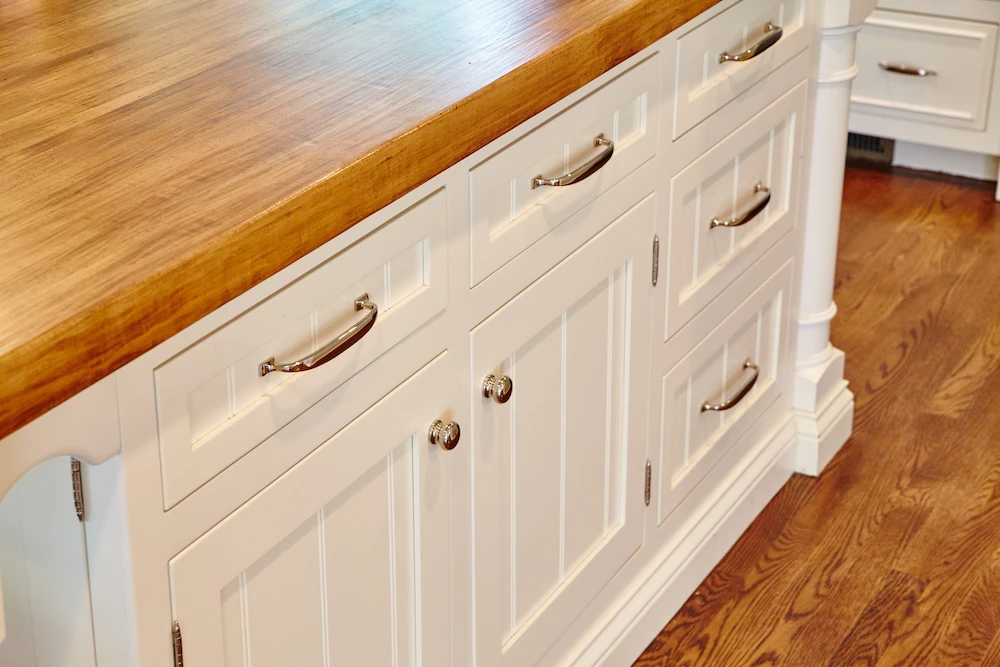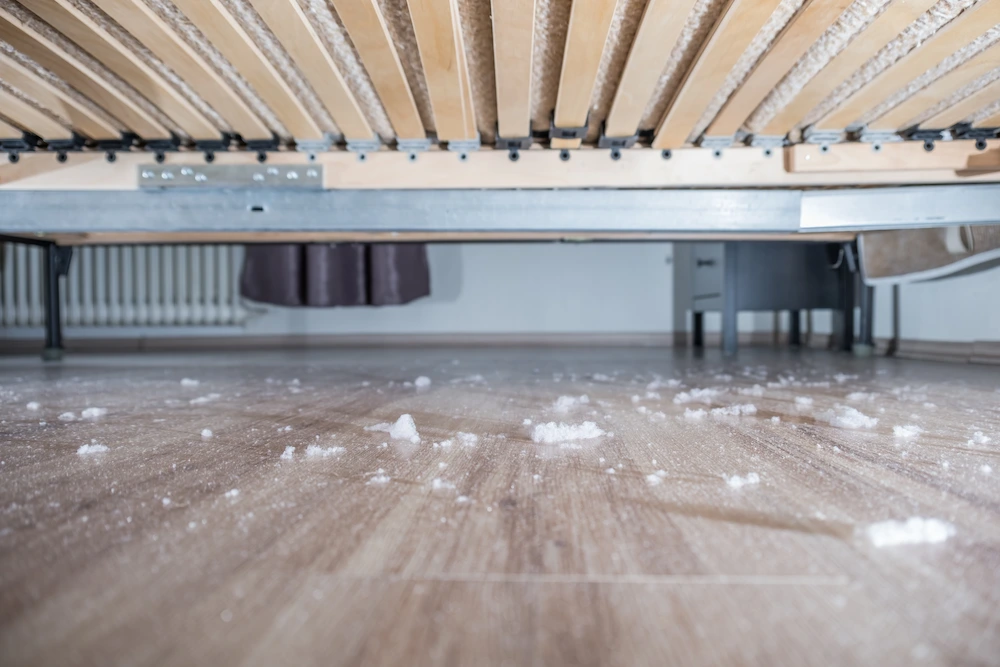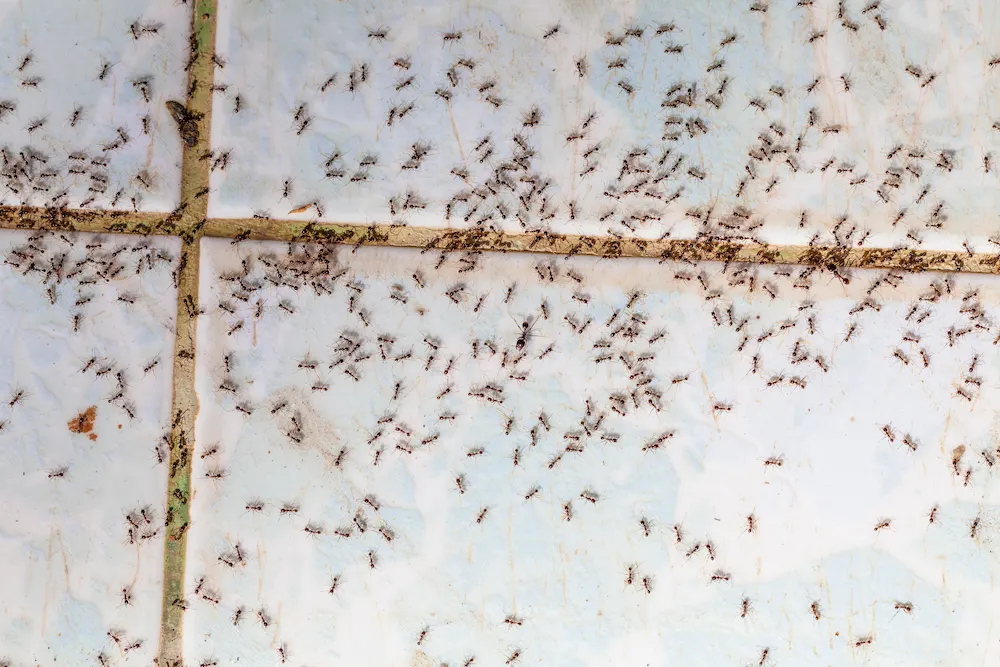Summary: Ants are always working to sustain their colonies, but why do they invade houses? This blog explains the 8 key reasons for ant infestations, as well as the solutions to every problem. Pointe Pest Control targets ant issues with efficient treatments and preventative measures.
One of the biggest stomach-dropping moments in the pest world is finding a trail of ants snaking throughout your kitchen. These hardworking pests are always on the hunt for enough food to sustain their massive colonies. This leads them to food sources that they deem safe, leaving a trail of pheromones (scent chemicals) from their nest to the food.
If you have an ant infestation, you’re probably wondering how these foragers got inside your home. There isn’t one concrete reason for every ant invasion since the season, ant species, and location all make an impact.
Let’s break down the 8 frequent reasons why ants invade and learn how you can remove these attractants to maintain an ant-free home.
Open Food

This is the number one reason why ants invade. Any food that’s left out on the counter or kept in its flimsy packaging is vulnerable to these pests. While foraging, workers leave a trail of pheromones (scent chemicals) from their nest as a path back home. The pheromones also lead other workers to the same food source, which is why we often see a cloud of insects swarming one piece of food.
Ants prefer sugary, starchy, and protein-packed foods for the energy they provide. Sugar ants and odorous house ants are common kitchen invaders because they love open food and the cozy shelter (more on this later). When their basic needs are met, why would they leave?
While their diet is pretty varied, ants generally prefer these food items:
- Baked goods
- Cereal
- Fruit
- Candy
- Meat
- Chips
- Crackers
- Baking ingredients
- Jams
- Honey
- Syrup
- Oats
- Pet food
The Solution: Store all pantry essentials and baked goods in airtight containers. For extra protection, keep fresh foods in the fridge or freezer. If you have a pet, keep their dry food in an airtight container or a clean lidded garbage can.
Moisture

Like any creature, ants need water to survive. They’re especially desperate for it in the summer or during a long drought. Since they need to bring it back to their colony, these pests need a reliable source of moisture. That’s where your problem might be.
It doesn’t take much to hydrate ants since they’re so small. Any water droplets will do the trick. They often use:
- Sweating pipes
- Leaking faucets
- Pet water bowls
- Puddles
- Spilled drinks
- Cluttered sinks (this can double as a food source)
- Condensation on the HVAC system
The Solution: Check your house for leaks often. If you find one, get it fixed immediately. Also, wash the dishes regularly and don’t leave them in the sink for more than a day. Change the water in your pet’s dish daily.
Shelter

We’ve come to the final basic necessity of ants: shelter. These pests want a safe nesting space and foraging area, so they often turn to houses and buildings to provide both of these things. Depending on the season, ants also hide from inclement weather. They don’t want to be outside when it’s pouring rain or blazing hot — and who can blame them?
Ant populations are often found in wall voids, under appliances, in cabinets, near plumbing, and under floors. Odorous house ants are infamous for living under floors or inside walls. Their name is a combination of this habit (“house”) and the smelly chemical that’s released when they’re squished (“odorous”).
The Solution: If your ant invasion is going strong, follow the trails to see where they’re coming from. This will also give you insight into what’s keeping them around (food, water, etc.). Ensure your door and window screens are intact before you open up the house.
Forgotten Crumbs & Spills

This relates back to the point about open food. It’s easy for us to overlook tiny crumbs and spills, but to ants, these are everything. Every food source matters in terms of sustaining their colonies. That’s why we see them carrying all kinds of morsels back to their nests.
They’re also not picky, so any type of food waste is good enough for ants. A drop of ketchup? Crumbs from yesterday’s toast? Your dog’s scattered kibble? It’s all an ant buffet! Whether they have to forage in the trash or underneath the fridge, these insects will stop at nothing to get their food.
The Solution: To eliminate the alluring crumbs, clean your kitchen daily. This includes wiping down the counters and dining surfaces, as well as cleaning the floor. Make sure all food waste makes it to the garbage can, and take out the trash when it’s full. Check your pantry and cabinets for any leaking cans and spilled items, and remove the offending items.
Overgrown Plants

Ants have to come from somewhere, and that “somewhere” is usually the outdoors. When plants and tree branches touch the house, they act as freeways for traveling ants. They can walk along the plant, enter the house through a crack, and start foraging for food.
An overgrown yard has a lot of hiding places for tiny pests. They can easily build their nests in tall grass or under thick brush, which would easily conceal their anthills. There’s also a lot of ant food in an unkept yard. Ants enjoy nectar, seeds, insects, aphid honeydew, and leaves.
The Solution: Keep the yard generally tidy and check it often for ant activity. Mow the lawn once a week in the warmer months. Trim back all plants, bushes, and tree branches at least one foot from the house. If you stack firewood, keep it neatly stacked at least 20 feet from the house.
Entry Points

We’ve mentioned entry points in the context of these other reasons, but entry points are a huge problem in their own right. Ants can squeeze through openings just 1/64 of an inch wide, so any crack or gap is enough to let in these relentless pests.
Since workers can’t fly, their entry points are confined to the places they can reach by walking. The most common ones are near the window and door frames, floor, foundation, electrical wiring, and pipes. Loose and damaged wood is also an easy access point for ants, especially carpenter ants (which are an entirely different issue).
The Solution: Check your house for any cracks or holes, and seal these entry points with waterproof caulk. Inspect all of the weather stripping and window/door screens for rips, gaps, and cracks. Replace any that don’t fit tightly against the house.
Cluttered Floors

Our floors collect a lot of dirt and debris just from us going about our days. Unfortunately, this gives ants a lot of reasons to stick around once they’re inside. Crumbs, spills, pet food, and grease are all attractive. If they get their hands on food residue, they won’t want to leave.
It’s also easier for ants to sneak around floors that aren’t regularly cleaned. They can keep their trails under furniture, appliances, and clutter for extra protection. If you’re sure that your food and entry points situations are under control, but you’re neglecting the floors, that could be the last piece of the puzzle.
The Solution: When you’re dealing with an ant invasion, clean your floors (without disturbing any ant treatments) daily and keep them uncluttered. Use your method of choice (mopping, vacuuming, etc.) to remove all of those attractants. Make sure to get under furniture and appliances!
Infested Items

Like roaches and spiders, ants are sneaky hitchhikers when they’re brought inside on an item. It’s entirely possible that your ant problem stemmed from someone (hopefully accidentally) bringing an ant-infested object inside the house and no one noticing the problem until it’s too late.
There are quite a few items that could logically have ants, based on their preferences. Groceries, houseplants, boxes, packages, used furniture, and building materials all have the potential to carry some hidden pests. It’s all about where they came from and what they like about the item.
The Solution: If it wasn’t clear already, check every box and package before bringing it inside. A quick once-over of the item is enough to make sure there aren’t hidden pests. If the source of your ant problem is one plant or food item, throw it away in the outside garbage immediately.
Pointe Kicks Ants to the Curb
It’s no secret that ant infestations are a major problem every summer. When you need efficient solutions to your ant issues, Pointe Pest Control is here to help! Once our licensed technicians determine the ant species at play, we target the root of the problem with our advanced treatments. Our goal is to eradicate the infestation, not temporarily keep the ants at bay.
Summer is the season of pests, so time is of the essence when it comes to pest control. We are committed to protecting your home from invasive ants and other creepy-crawlies. For a free quote on our effective services, contact us today!
Citations
Hope, P. & Fogarty, L. (2024, September 17). How to get rid of ants. Consumer Reports. Available at https://www.consumerreports.org/home-garden/pest-control/how-to-get-rid-of-ants-in-the-house-a3627053544/ (Accessed on July 1, 2025).
What attracts ants to your kitchen?. (2023, May 3). Maggie’s Farm. Retrieved July 1, 2025, from https://maggiesfarmproducts.com/blogs/bug-help/attracts-ants-to-kitchen




